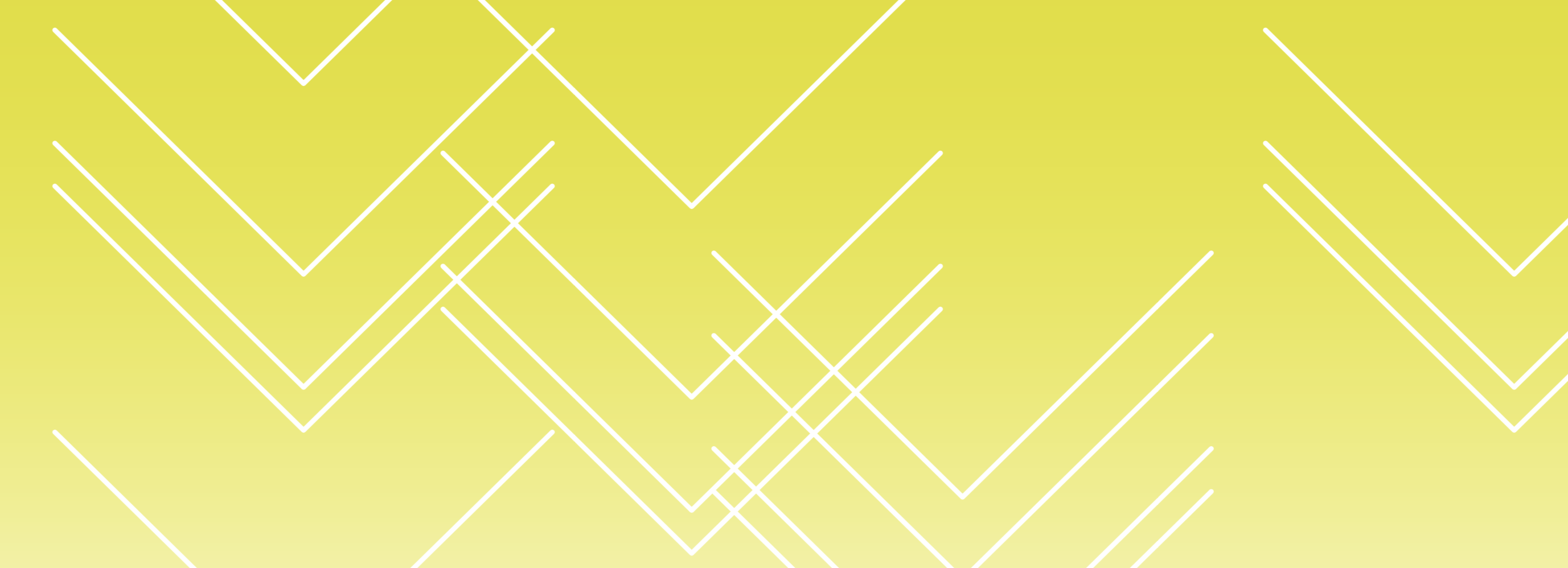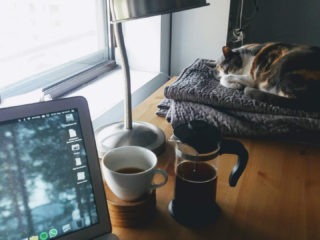Despite the dumpster fire that is 2020, Leff has managed to hire six people this year—which means we’ve grown from a nimble team of 14 to a (still pretty nimble) team of 20.
We had stars in our eyes when our account manager, Emma, started in February. She’d only been here a month when we packed up our monitors, said farewell to our Chicago Loop office, and hunkered down at home. We put hiring on hold, but our clients were keeping us busier than ever as we helped shape thought leadership about how businesses can cope with the pandemic’s fallout. Two months whizzed by, and we looked around and realized we couldn’t wait anymore. We needed more help immediately.
In June, we hired associate managing editor, Andrew, and none of us have yet met him in person. It’s possible he’s actually a cat wearing a human suit who’s really good at sending emails. Then in August, we hired our newest design associate, Erik. (Pretty sure he’s human.) And just last month, we offered positions to three new editorial production associates—all of whom will start on the same day in a few weeks.
We’ve always been a flexible workplace, encouraging staff to work from home when needed. But six months of being forcibly remote has been more challenging than we—or at least I—anticipated, especially in terms of navigating hiring and onboarding. Our goal is to hire the right people and the right roles—and for our newest faces to feel at home and empowered to do their best work. A few thoughts about hiring and onboarding stick out to some of us who have been involved in the process.
Alia
Bring company culture to life for the candidate. An organization seeks candidates that are a good fit for its needs and team culture, and the candidate must also decide whether the organization is a good fit for them. When we’re in the office, some cultural nuances are far more visible—a fully stocked kitchen and beer fridge, casual dress, and records playing on the turntable. The remote work environment changes all of that. And while those are just perks, they do in many ways capture what we value: creating a space for creativity and collaboration, kicking back with a drink or two after a long week, and flattening the hierarchy that often impedes an open dialogue at work. So we have to ensure our culture and team spirit come through during video calls, including new-hire interviews, even if we’re taking them from our living rooms or bedrooms. In some ways, the peek inside our personal spaces can facilitate a certain ease of conversation, but it takes concentrated effort to explain how our team operates and the ways we interact to achieve the best results as a group.
Determine whether roles will be remote for . . . well, ever. The possibility of continued remote work means we’re opening up the hiring pool. It also changes what used to be an occasional perk. From a geographic perspective, we’re no longer looking for certain positions solely in Chicago, where we’re based. Now, we’re thinking long term about building and maintaining a remote culture. Company events will have people meeting face-to-face for the first time, and we’ll need to be more thoughtful about the resources we provide to remote colleagues.
Seek the right skills and attributes for a remote (and weird) working environment. It’s not just that we’re all remote. We’re in the middle of a pandemic that has families managing remote schooling, daycare closures, and other disruptions (often to our sanity). So communication skills, self-motivation, adaptability, and organization skills are more critical than ever. Managers rely more heavily on their team members to reach out when they have an issue or want to go over something—an interaction that happens more naturally when you’re sitting across from someone. And sometimes we have to ask different people to take on a new task when a colleague is unexpectedly on childcare duty or tending to an emergency. We must all demonstrate a more acute willingness to jump in and get up to speed quickly. This attitude is part of what makes our team great whether we’re in the office or not—but we’re even more actively looking for these kinds of people right now.
Brittany
Recognize the need to hire brand-new roles. The pandemic upended our day-to-day norms. Suddenly projects that typically take months needed to be done in weeks or even days. The audiences we write for were watching the conditions change rapidly, and content could become stale in a matter of hours—a newsroom pace that thought leadership is not usually beholden to. The accelerated pace drew attention to the internal processes that were not flexible enough to adapt and got us thinking creatively about what new types of skill sets and employee profiles we needed to attract. Andrew is the first of his title as our associate managing editor, and we’re excited to bring in an experienced managing editor before the end of the year. Without the pandemic, these needs may not have become obvious until much longer after we really needed it.
Overcommunicate. I manage Andrew directly, and from day one we’ve had a standing daily videoconference to check in with one another. Sometimes we talk about urgent projects. Sometimes we talk about our cats. (Seriously, he might be one.) But having a standing expectation that we’re going to check in has helped us get to know one another as colleagues and people, and it’s created an anticipated space for questions, dialogue, and commiseration. Company-wide, we have two weekly videoconference check-ins with the entire staff. And we’ve strengthened our efforts to hold weekly or biweekly one-on-one meetings between each staffer and their manager or mentor. It’s a lot of meetings, and it can’t exactly replace the casual conversations in the office kitchen, but it helps.
Delilah
Put in the time to overcommunicate. I’ll add a +1 to Brittany’s note on the importance of communication. With Erik, as well as with the rest of the design team, we set clear expectations at the beginning of the day and throughout the week with regular meetings and recap emails. It’s also not as obvious if someone isn’t very busy, so I rely on my team to reach out when they can take on projects—and most of the time it’s a huge help and a weight off their teammates who may be juggling more projects that day. As a manager, this level of checking in definitely takes a bigger chunk of time out of my day than it did when we were in the office together, but it’s important that I keep a pulse on what’s going on with the design group so I can help manage priorities and tight deadlines.
Adapt teaching methods. Especially with new designers, there’s a lot to teach in terms of branding guidelines, tools, and Leff’s approach to ensuring high-quality designs. Teaching via Google Meet just isn’t the same as getting out a piece of paper and sketching something out together. Erik and I have met at the office a couple times, and those sessions have been really helpful in covering a lot of ground quickly. But, of course, we need to be vigilant and careful when we’re in person during a pandemic. When meeting in person isn’t possible, it’s important to recognize—and be OK with—the fact that teaching is going to go slower and take longer. Even the smartest kid in the room may need to learn something more than once when you’re relying on instant messaging, emails, and videoconferences rather than a quick huddle where you can get to the point really quickly.
Have fun. When we’re in the office together, the design group routinely meets for official business and ends up hanging out an extra 15 minutes just joking around. We go for walks to grab lunch or coffee or browse the racks at Reckless Records. I miss that banter, and it can be difficult to recreate over videoconference, particularly given the stress of living through a pandemic. Some days we all just want to get back to our to-do list, and it’s not as natural to stick around and have light conversation. But that conversation and sense of camaraderie is what makes stressful days feel OK. So whether it’s in a group meeting or in a one-on-one check-in, I always try to offer up time to just be with our colleagues—to catch up on whatever TV show we’re watching (specifically true crime documentaries) or whatever else is going on in our lives at the moment. I think it’s particularly important to make this effort so that people who have joined us since COVID-19 can feel like not just a part of a work team but a work community.




Leave a Reply
You must be logged in to post a comment.